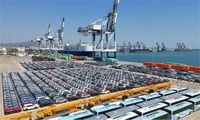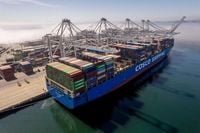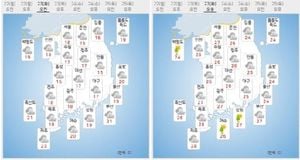In a significant development for the global trade landscape, China has reported a notable increase in its exports of aluminum alloy wheel hubs, a trend that reflects wider economic implications as international trade tensions rise. According to SMM News, between January and February 2025, China exported 155,300 metric tons (mt) of aluminum alloy wheel hubs, marking a slight increase of 1% year-on-year. This figure includes a robust export of 88,800 mt in January 2025 alone, which represents a significant month-on-month increase of 17.6% from December 2024.
January's export volume reached a new high not seen since January 2022, suggesting a strong demand for Chinese aluminum products. However, February saw a sharp decrease in exports to 6.65 mt, down 25.1% from January, although this still reflects a slight increase compared to 6.57 mt in the same month last year. The fluctuations in export volumes are believed to be influenced by expectations of impending tariff hikes, prompting manufacturers to expedite shipments.
The primary destinations for these aluminum alloy wheel hubs include the United States, Japan, Mexico, South Korea, and Thailand. In December 2024, the United States regained its position as the top export destination, accounting for 29% of total exports, a slight increase from the previous month. Japan's share, however, fell from 24% to 19%. This shift in export dynamics is particularly noteworthy given the backdrop of heightened trade tensions, especially following Donald Trump's return to the presidency and the imposition of new tariffs.
Trade experts suggest that the increase in exports to the U.S. and other countries may be attributed to a rush to export in anticipation of these tariffs. For instance, U.S. wheel exports saw a 15% increase month-on-month, while Mexico and Canada reported increases of 31% and 18%, respectively. Notably, Mexico has emerged as a vital player in this export scenario, having replaced South Korea as the third-largest destination for Chinese aluminum wheels. Much of this growth can be linked to Mexico's strategic position in the automotive supply chain, where locally assembled wheels are often shipped to the U.S. as complete vehicles.
However, the outlook for aluminum wheel exports remains uncertain. SMM analysts caution that while exports rebounded at the end of 2024, this trend is largely driven by the rush to export under the looming threat of tariffs. They predict that the overall export volume may decline in the first half of 2025, as trade protectionism continues to shape the global market.
As the situation evolves, Asian economies face significant challenges due to Trump's reciprocal tariffs, which have raised concerns about the sustainability of their export-driven models. Bloomberg reported on March 31, 2025, that Trump's administration has already imposed a 20% tariff on imports from China, further complicating the trade landscape for nations like Vietnam, South Korea, Japan, and India, which have also been singled out for maintaining trade surpluses or imposing their own tariffs.
This new wave of tariffs poses a generational challenge for Asian economies that have long relied on exports to the U.S. and a global environment characterized by low trade barriers. The ramifications of these policies could be profound, affecting not just trade flows but also the economic stability of countries that have built their growth strategies around export-led growth.
Moreover, the escalating trade disputes could lead to a record number of cases being filed with the World Trade Organization (WTO), as countries react to the shifting trade policies. As reported by the Financial Times on March 31, 2025, China’s recent export boom has sparked an unprecedented number of WTO disputes, highlighting the increasing friction in international trade relations.
In conclusion, the interplay between China's aluminum exports and the broader implications of U.S. tariffs underscores the complex dynamics of global trade. As countries navigate these challenges, the future of international trade agreements and economic cooperation remains uncertain, with potential shifts in alliances and trade partnerships on the horizon. The coming months will be crucial in determining how these factors will shape the global economic landscape.



![Aluminum Wheel Exports Hit a Three-Year High in January, but Faced a Waterloo in February [SMM Analysis] | SMM](https://thumbor.evrimagaci.org/e51V2UpnL_PPEUWF_H7Ka1NI_vU=/200x0/tpg%2Fsources%2F7f054129-43ba-4634-999b-8aa350832f6c.jpeg)



